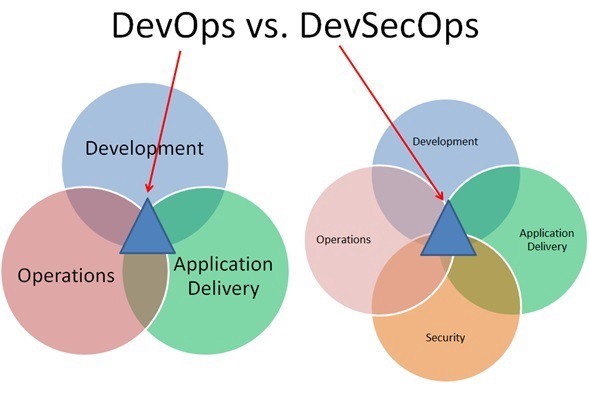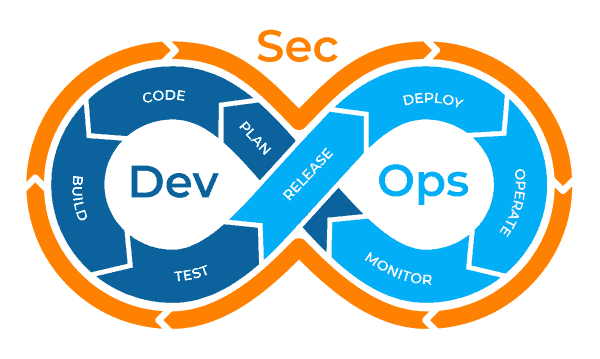When determining your best practices for DevOps, there are many moving parts to consider. However, DevOps is at the core of nearly every business. So when done well, DevOps produces tremendous benefits: faster delivery times, better collaboration, improved overall productivity, early detection, and correction of defects. Many more advantages could be listed. At the heart of these benefits is giving your overall security effectiveness a boost.
But what good will all of these positives do for your company if you aren’t prioritizing security? Focusing on leveraging DevOps to improve your workflow but ignoring security issues, it’s like trying to fill a strainer with water. DevOps needs a trusty sidekick who provides continuous backup.
DevSecOps
In the past, the role of security was isolated to a specific team in the final stage of development. Effective DevOps implementation ensures rapid and frequent development cycles, but outdated security practices can undo even the most efficient DevOps initiatives. Considering this, DevOps should not be only concern development and operations teams. If you want to take full advantage of a successful DevOps strategy, security must become integrated into the everyday workload.
Recently we have seen a rising trend of DevSecOps. It is about injecting a security-first mindset into the application development life cycle. The effect is seeing a reduction of vulnerabilities while improving overall security. This model assumes that everyone is responsible for minimizing security risks. Hence, there is less noise and confusion about who is responsible for what.

Cultural Shift
Before the arrival of DevSecOps, organizations executed security checks at the final stages of the software development life cycle, and these checks were isolated to a specific team. By the time our products start getting security checks, they have passed most other development stages in the workflow. Then if any security threat is discovered at this point, it may mean changing countless lines of code. The negative impact can mean costly design changes and long discussions. This is a big waste of time and money.
If security remains at the end of the development pipeline, organizations adopting DevOps can find themselves slipping back to the long development cycles they were trying to avoid in the first place. Now with DevSecOps, security is a shared responsibility. An integrated security approach, from end to end, is the better model. “Fast and secure code delivery” is the Holy Grail for most development businesses.
DevSecOps is a way of approaching IT security with an “everyone is responsible for security” mindset. It involves injecting security practices into an organization’s DevOps pipeline. The goal is to incorporate security into all stages of the software development workflow. DevSecOps motivates the use of tools to automate some security gates to avoid slowdowns. But, effective DevSecOps requires more than new tools. Consider it as a cultural change, moving DevOps to integrate the work of security teams sooner rather than later.

DevSecOps Best Practices
The following points are very important when you want to implement DevSecOps in your organization.
Security Boost
The obvious importance of secure coding is the ability to develop software that has a high resistance to vulnerabilities. Not practicing secure coding may invite a multitude of software security risks, such as a breach of an organization’s confidential information. It’s recommended to include new security training for developers too.
Automation
Running every planned security check in a manually way can be time-intensive. So, in order to match the pace with your code delivery schedule, automating security tests where possible is a necessity. This is especially true for large organizations where developers push various versions of code to production multiple times a day. It’s important to be thoughtful when automating security testing. Choosing the wrong automated tools for the wrong purposes can be detrimental.
People and Technology
It doesn’t matter how good you are at the other stuff; if your team isn’t interested in this collaboration, implementing a productive DevSecOps environment simply isn’t possible. Remember to share the benefits with each team member to get buy-in. This strategy includes process changes that need to be embraced by all for optimal effectiveness.
Process
A process consists of many components. The most important ones are workflow standardization and documentation. These agreements should be made with the whole team’s acceptance.
Technology
Technology helps people to execute their tasks easier and faster. Some technologies that are used in DevSecOps practices include automation and configuration manager, security as code, automated compliance scans, host hardening, etc.

Time to change your mindset about security
There’s no doubt that DevSecOps revolutionizes the way organizations protect the organization. The technical, as well as the business benefits that organizations can receive from implementing DevSecOps, are very promising. Although you’ll most certainly come across some problems when you start, implementing DevSecOps is your best chance to boost security levels and protect the organization in the long run.

